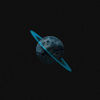Extrasolar planet
“Mmmmm!!! The Milky Way is like a buffet; all sorts of planets to choose from!”
– Galactus on exoplanets
“The secrets of Brown dwarfs are .... *beep*”
– WordGirl on brown dwarfs
“Mhmfm phmmfppffhmfm pffhmmhhh”
– Kenny McCormick on exoplanets
Extrasolar planets, or Exoplanets are planets; round or spherical objects used in intergalactic sports, except they are planets beside the ones in the solar System: Mercury, Venus, Earth, Lyons, Zula, Mars, Jupiter, Saturn, Uranus, Youranus, Neptune, Pluto & Roseanne (plus those other dwarf planets). In other words, any planet that is not in the solar system.
It is commonly known that all extrasolar planets harbor beings that are not only of human-level or greater intelligence, but also hellbent on colonizing the earth, particularly the United States, and wiping out all of humanity. All of such beings are capable of breathing in any atmosphere and surviving without any sort of clothing or spacesuit in any temperature, and the majority are four-limbed bipedal beings with spindly arms and bulging eyes who enjoy capturing cows for no apparent reason.
Going to Exoplanets[edit | edit source]
The simple answer: use a fast spaceship. They may be hard to build and/or obtain but they'll get there fast. Or use a Wormhole, but thanks to the Vanscoit effect makes wormholes non-practical. According to Einstein's General Relativity theory the Vanscoit effect "only affects stargates with highly energized ionized areas", or just call Hawking on his phone to get one fresh wormhole.
Planets vary from planet system to another, galaxy to another. Earthlings send probes to land on some terrestrial planets like Darwin IV and your mothers ass. Extraterrestrial life as we imagine, do & don't know it, is everywhere including your own penis.
Drake equation[edit | edit source]
The Drake equation (also called the "Noumer equation," the "Green Grue Formula," or erroneously labeled the "Saget equation") is a attempt to puzzle out on what aliens might be and how big their cocks are.
This equation attempt was devised by Dr. Frank 'knobend' Drake, in 1960, in an bad attempt to estimate the number of extraterrestrial civilizations in the Milky Way (our galaxy) with which earthlings might come into contact or possibly be raped by. The main purpose of the equation is to see that earthlings might not get mixed up in the wrong civilization conversation and start a interstellar war (and eventually a intergalactic war). This equation with the help of the Chavs, can determine the number of such extraterrestrial civilizations and pedo's.
Drake was too optimistic and, ultimately a gay moron.
Definition[edit | edit source]

Exoplanets are everywhere! One or a dozen in a system or another. Exoplanets are the the planets you see in Star Wars or in star Trek, etc. They're basically other planets, dumbfuck.
Nomenclature[edit | edit source]
Apparently, astronomers found a common way to name extrasolar planets, which is used by the scientific literature, is almost the same as for binary stars, except that a lowercase letter is used for the planet instead of the uppercase letter for stars. A lowercase letter is placed after the star name, starting with "b" for the first planet found in the system (51 Pegasi b); "a" is skipped to help prevent confusion with the primary star. This is called the 'lower case rule'. The next planet found in the system would be labeled with the next letter in the alphabet. For instance, any more planets found around 51 Pegasi would be catalogued as "51 Pegasi c" and then "51 Pegasi d", and so on. If two planets are discovered at about the same time, the closer one to the star gets the next letter, followed by the farther planet. However, in some cases, a smaller planet is found closer to the star than other previously known planets, causing the letter order to not follow the order of the planets from the star. For example, in the Julysillia system, the most recently discovered planet is referred to as Julysillia d, despite the fact that it is closer to the star than Julysillia b and Julysillia c, e, and so on.
But not all astronomers knew this. They followed these rules, except they forgot the 'lowercase rule' part, when they named XZ7-543532465-346ASDF000037 B. Amd thats because XZ7-543532465-346ASDF000037 B is not a pulsar planet (pulsars have +'s in thier names, unless they have a specific name, like Crab Pulsar, for example).
How they discovered them[edit | edit source]
Astronomers use anal methods to detect them, stuffing a finger up their own ass, sucking each other off, spending money on useless computer simulations, infrared, etc.
Gossip is the most commonly accepted theory along with The Kid Raping theory.
Extrasolar moons[edit | edit source]
Very abundant, indeed. Extrasolar moons are moons that, like planets, very in terms of size, radius, temperature, shape, bat fuck insaneness, volume, mass & color (they orbit exoplanets). Some people say that Zula & Nayelista are double planets, but Zula is not a exoplanet so... it should'nt be mentioned.
Most announced exomoons are rocky or icy bodies like Ganymede and orange like Titan or Nayelista. Some resemble asteroids.
Types of planets[edit | edit source]
“Mmmmm!!! The Milky Way is like a buffet; all sorts of planets to choose from!”
– Galactus on exoplanets
“The secrets of Brown dwarfs are .... *beep*”
– WordGirl on brown dwarfs
“Mhmfm phmmfppffhmfm pffhmmhhh”
– Kenny McCormick on exoplanets
'istant sun. Ironically, this planet is used in a planetary game of soccer.]]
“Mmmmm!!! The Milky Way is like a buffet; all sorts of planets to choose from!”
– Galactus on exoplanets
“The secrets of Brown dwarfs are .... *beep*”
– WordGirl on brown dwarfs
“Mhmfm phmmfppffhmfm pffhmmhhh”
– Kenny McCormick on exoplanets
'
- Artificial Planets - They are still planets in their own right, mainly because they are round. Some may be small, but the Retardo faction does not classify them as dwarf planets... yet. Examples include Toy Planet, Unicron & possibly Upsilion-Rodriguez+193520 G.
- Dwarf planets - They're definitely extrasolar dwarf planets and like Pluto & Ceres, they orbit is located in a ring of space debris, like a asteroid belt. Jay Leno's Chin is an known possible example, but whether a body part is a celestial object is in debate.
- Rodriguez-class planets - are a pretty shit subclass of rocky planets. This class has terrestrials with Junkies around them. They vary from planet; like Planet Generic; rocky, sperm-coated atmosphere with rings. Another type, more like half gas giant-half rocky type. For example, if a Venus-like planet (low or high thick dense atmosphere) had rings, it would be like a 'half gas giant-half rocky type planet' and this type has to be more than 3 Earth masses or have 2 testicles. Lexicon the Planet is this type.
- Brown dwarfs - are a sort of 'shit stars'. They're slightly shittier than most assholes. Most have many roles. Some Brown dwarfs orbit stars as if they were planets (these are Sub-brown dwarfs), and some have planets penetrating them (as if stars), but the planets are not moons. The brown dwarfs that have planets lit very dimly, but should not be confused with red dwarfs which are stars. The distinction between a sub-brown dwarf and a planet is unclear; astronomers are divided into two camps as whether to consider the formation process of a planet as part of its division in classification. Lexiconians know more about Brown dwarfs than us because their solar system has a brown dwarf. We (yes, us earthlings) don't know about its surface or something like that...
- Rogue planet - Rogue planets (also known as also known as interstellar planets, free-floating planets or orphan planets) are planets except they don't orbit a star. Some astronomers have observed such objects and they've seen scars, piercings, maskera & sad faces, as if these objects were 'emo'. Possible objects include Cha 110913-773444.



